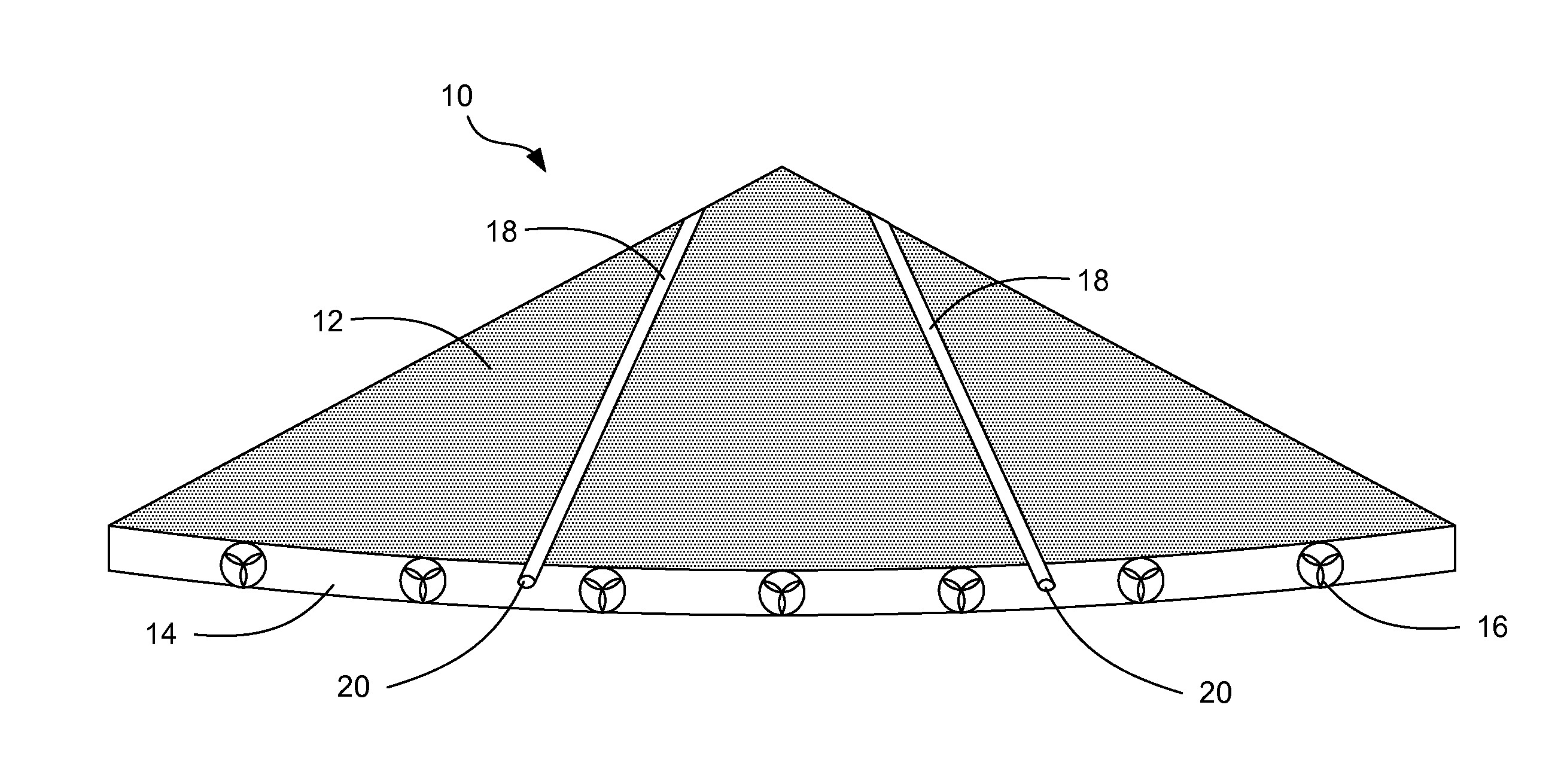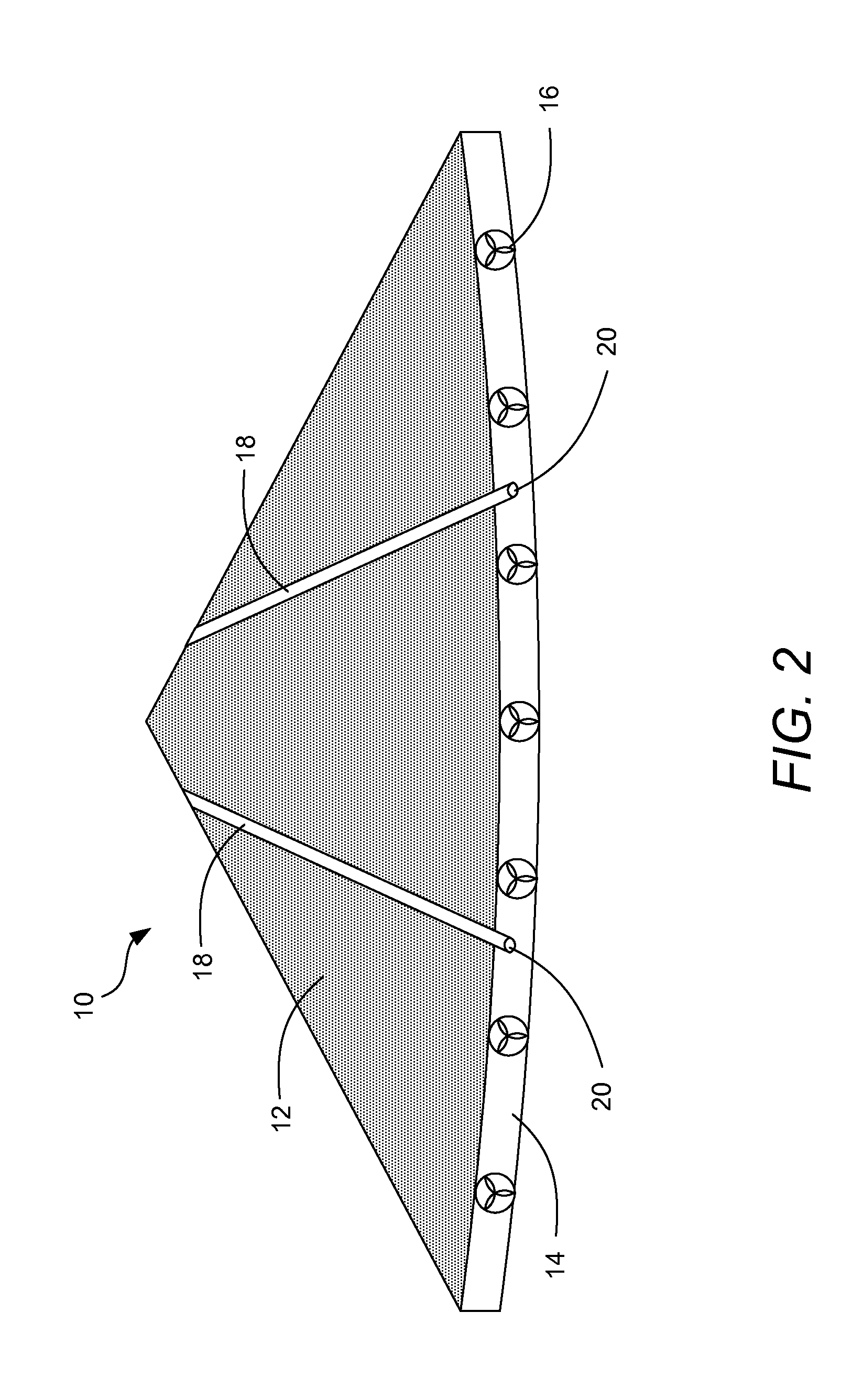Systems and Methods for Ozone Treatment of Grain in Grain Piles
- Summary
- Abstract
- Description
- Claims
- Application Information
AI Technical Summary
Benefits of technology
Problems solved by technology
Method used
Image
Examples
Embodiment Construction
[0026]A description of embodiments of the present invention will now be given with reference to the Figures. It is expected that the present invention may take many other forms and shapes, hence the following disclosure is intended to be illustrative and not limiting, and the scope of the invention should be determined by reference to the appended claims.
[0027]Embodiments of the invention provide systems and methods for treating grain stored in a grain pile with ozone. Treatment of grain with ozone according to embodiments of the invention may be effective for treating grain for toxins, insects, mold, and / or odor. A method according to embodiments of the invention involves monitoring temperature and / or odor at a plurality of aeration outlet locations spaced around the grain pile. When an abnormal temperature variance or abnormal odor is detected at one or more of the aeration outlet locations, a determination is made as to a problem location within the grain pile where a treatment o...
PUM
 Login to View More
Login to View More Abstract
Description
Claims
Application Information
 Login to View More
Login to View More - R&D
- Intellectual Property
- Life Sciences
- Materials
- Tech Scout
- Unparalleled Data Quality
- Higher Quality Content
- 60% Fewer Hallucinations
Browse by: Latest US Patents, China's latest patents, Technical Efficacy Thesaurus, Application Domain, Technology Topic, Popular Technical Reports.
© 2025 PatSnap. All rights reserved.Legal|Privacy policy|Modern Slavery Act Transparency Statement|Sitemap|About US| Contact US: help@patsnap.com



